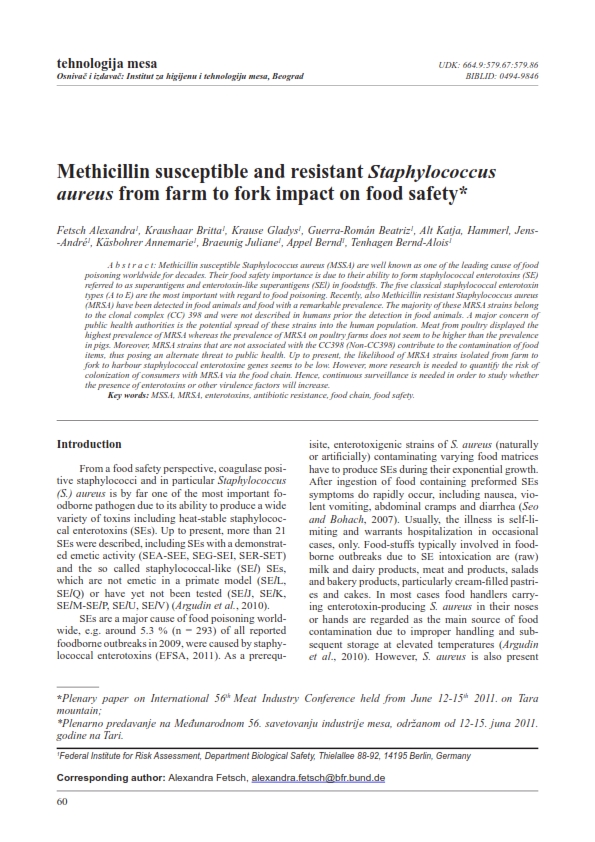Methicillin susceptible and resistant Staphylococcus aureus from farm to fork impact on food safety
Abstract
Methicillin susceptible Staphylococcus aureus (MSSA) are well known as one of the leading cause of food poisoning worldwide for decades. Their food safety importance is due to their ability to form staphylococcal enterotoxins (SE) referred to as superantigens and enterotoxin-like superantigens (SEl) in foodstuffs. The five classical staphylococcal enterotoxin types (A to E) are the most important with regard to food poisoning. Recently, also Methicillin resistant Staphylococcus aureus (MRSA) have been detected in food animals and food with a remarkable prevalence. The majority of these MRSA strains belong to the clonal complex (CC) 398 and were not described in humans prior the detection in food animals. A major concern of public health authorities is the potential spread of these strains into the human population. Meat from poultry displayed the highest prevalence of MRSA whereas the prevalence of MRSA on poultry farms does not seem to be higher than the prevalence in pigs. Moreover, MRSA strains that are not associated with the CC398 (Non-CC398) contribute to the contamination of food items, thus posing an alternate threat to public health. Up to present, the likelihood of MRSA strains isolated from farm to fork to harbour staphylococcal enterotoxine genes seems to be low. However, more research is needed to quantify the risk of colonization of consumers with MRSA via the food chain. Hence, continuous surveillance is needed in order to study whether the presence of enterotoxins or other virulence factors will increase.





